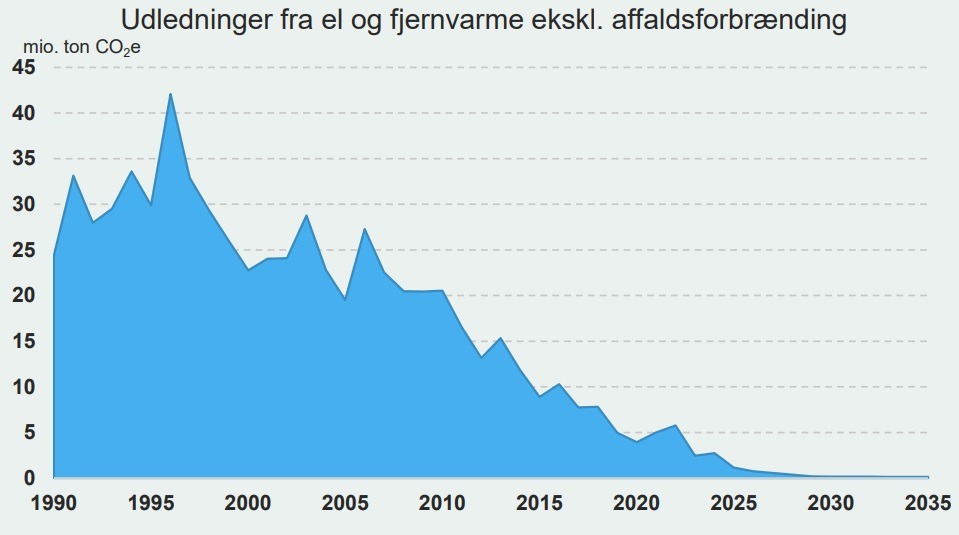News
Fossil fuels almost totally gone from electricity and district heating sector
This article is more than 2 years old.
New figures from Energistyrelsen reveals that greenhouse gas emissions by the sector will be practically zero by 2030

Photo: Energistyrelsen
According to a new report from the Energistyrelsen energy agency, the use of coal, oil and natural gas will soon be a thing of the past in the electricity and district heating sector.
The agency expects the share of greenhouse gas emissions by the sector to decline to 3 percent by 2025 and to under 1 percent by 2030 – not taking waste incineration into account.
“From 1990, the electricity and district heating sector has shifted from being a sector with big greenhouse gas emissions to having a significantly lower climate footprint,” the report states.
“Emissions by the sector will drop to about 0.1 tonnes of CO2e in 2030, which is the equivalent of a reduction of over 99 percent compared to 1990 levels.”
READ ALSO: Documentary prompts government to improve offshore energy security
Halfway there by 2025
That development stands in stark contrast to just 10-15 years ago, when the sector accounted for around 30-40 percent of Denmark’s total greenhouse gas emissions (see image below).

(photo: Energistyrelsen)
The report also reveals that, even in the absence of new initiatives, Denmark’s overall emissions will be reduced by about 50 percent by 2025 and by over 63 percent by 2030.
The country’s net greenhouse gas emissions are accordingly expected to fall from 46.3 million tonnes of CO2e in 2021 to 39.4 million tonnes in 2025 – a 50 percent reduction compared to 1990 levels.
Furthermore, in the absence of new political initiatives, Denmark is predicted to emit 29 million tonnes of CO2e by 2030.










































